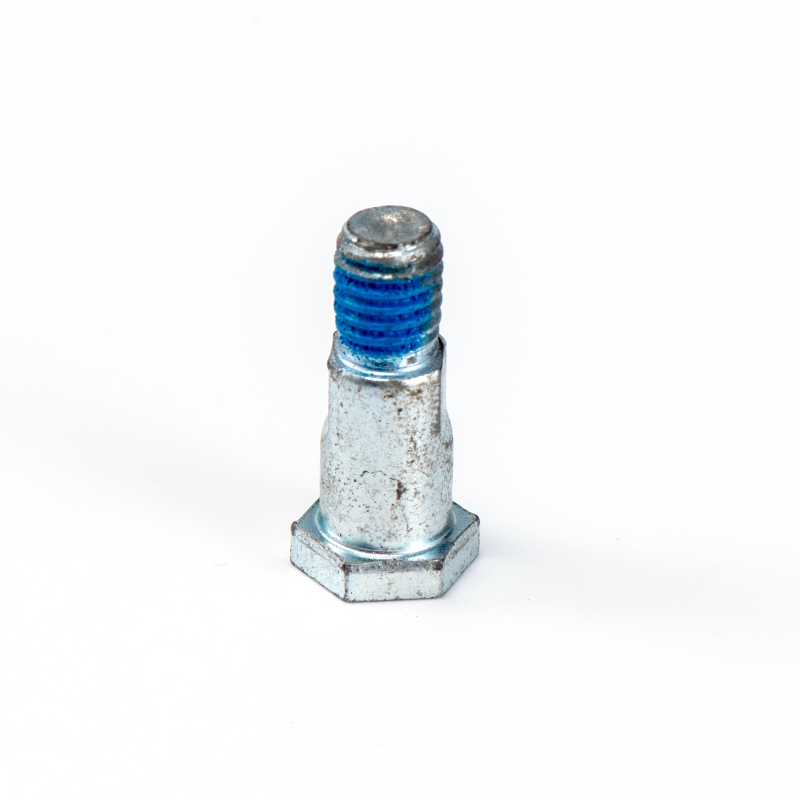Hex Head Shoulder Screws, also known as stripper Bolts or shoulder bolts, are a specialized type of fastener characterized by a unique three-part design: a hexagonal head for tool engagement, a precisely machined cylindrical shoulder section, and a threaded portion at the end. This distinct configuration provides a combination of precise location, smooth bearing surface, and secure fastening that standard Screws cannot offer. The hexagonal head is designed to be driven with a wrench, typically conforming to standards such as ASME B18.3, and is available in sizes ranging from #4-40 up to 1/2"-13 or metric equivalents like M3 to M12. The most critical feature is the shoulder diameter, which is manufactured to exceptionally tight tolerances, often within a range of ±0.0005 inches (±0.0127 mm) or h6/g6 fit for metric sizes, ensuring a precise slip or press fit into a mating hole. The shoulder length is also tightly controlled, with common lengths varying from 1/4 inch to 4 inches (6 mm to 100 mm). The threaded section is typically a standard Unified National Coarse (UNC), Unified National Fine (UNF), or metric thread pitch. These screws are commonly manufactured from high-strength materials such as alloy steel (e.g., 4140 or 4340 heat-treated to a Rockwell hardness of C32-38 for a balance of strength and toughness), stainless steel (e.g., 303, 304, or 316 for corrosion resistance, with a typical hardness of B75-95), or sometimes aluminum for lightweight applications. The surface finish on the shoulder is critical and is often ground to a very smooth surface roughness of 16-32 microinches (0.4-0.8 μm) Ra to minimize friction and wear when acting as a pivot or axle.

The primary application scenarios for Hex Head Shoulder Screws are numerous and span across precision industries. In tool and die making, particularly in mold and stamping press operations, they are indispensable as guide pins, alignment posts, and pivots in stripper plates, ensuring perfect alignment between die sections throughout the press cycle. Their hardened and ground shoulder withstands significant shear forces and repetitive impact. In the automotive sector, they are used in braking systems, transmission assemblies, and suspension linkages as pivots and axles, where their precise diameter ensures minimal play and consistent operation. Robotics and automation heavily rely on these Fasteners for articulating joints, arm linkages, and guide mechanisms within robotic arms and linear actuator systems; the smooth shoulder provides a reliable bearing surface without the need for a separate bushing, reducing assembly size and complexity. Aerospace applications utilize them in flight control linkages, landing gear assemblies, and instrumentation panels, often in corrosion-resistant stainless steel or high-strength alloys, to provide lightweight and reliable pivoting points. Furthermore, they are found in countless consumer goods, such as being the central hinge pin in heavy-duty agricultural equipment, exercise machines, and industrial furniture, where their strength and durability are paramount.
Proper maintenance of Hex Head Shoulder Screws is essential for ensuring their longevity and reliable performance, especially in critical applications. The maintenance regimen is highly dependent on the operating environment and the specific function of the screw. For screws acting as axles or pivots, regular lubrication is the most crucial aspect. A high-quality, application-specific lubricant (e.g., lithium-based grease for high loads, synthetic oil for high speeds, or dry-film lubricants in dusty environments) should be applied to the shoulder surface and the unthreaded portion of the hole. This reduces friction, prevents galling (especially in stainless-on-stainless applications), and protects against wear. The frequency of lubrication should be determined by the equipment's service manual, often based on hours of operation. Routine inspection is another key maintenance activity. This involves checking for visible signs of wear on the shoulder, such as scoring, galling, or a noticeable reduction in diameter, which can lead to undesirable play and misalignment. The threaded portion should be inspected for damage, corrosion, or thread deformation that could compromise clamping force. In high-cycle applications, inspecting for metal fatigue, often visible as micro-cracks, is vital. Cleaning is important, particularly in environments with contaminants like metal chips, dust, or moisture. The screw and its mating hole should be cleaned with an appropriate solvent before applying new lubricant. For corrosion-prone environments, selecting the correct material (e.g., 316 stainless steel) and potentially applying an additional protective coating like passivation or a thin layer of corrosion-inhibiting grease can significantly extend service life. Finally, proper installation torque is a form of preventative maintenance. Over-torquing can stretch the threaded portion, leading to failure, while under-torquing can result in loosening. Using a calibrated torque wrench according to the manufacturer's specifications, which calculate torque based on the thread size and material strength, ensures the screw is loaded correctly and will perform as intended.





